The name ‘fiddle leaf fig’ makes it sound as though this particular plant needs very special care.
This is not the case, but the plant does need to be looked after, or the fiddle leaf fig leaves may turn yellow.
Table of Contents
Why is my Fiddle Leaf Fig Turning Yellow?
The most common reason for the leaves of a fiddle leaf fig turning yellow is either over-watering or under-watering. The plants also need to grow in warm and humid conditions, with enough light. There are very few pests that affect a fiddle leaf fig, but the scale insect can infest the plant. Any one of these factors on its own could cause the leaves to turn yellow. A combination of any or all of them can have the same effect.
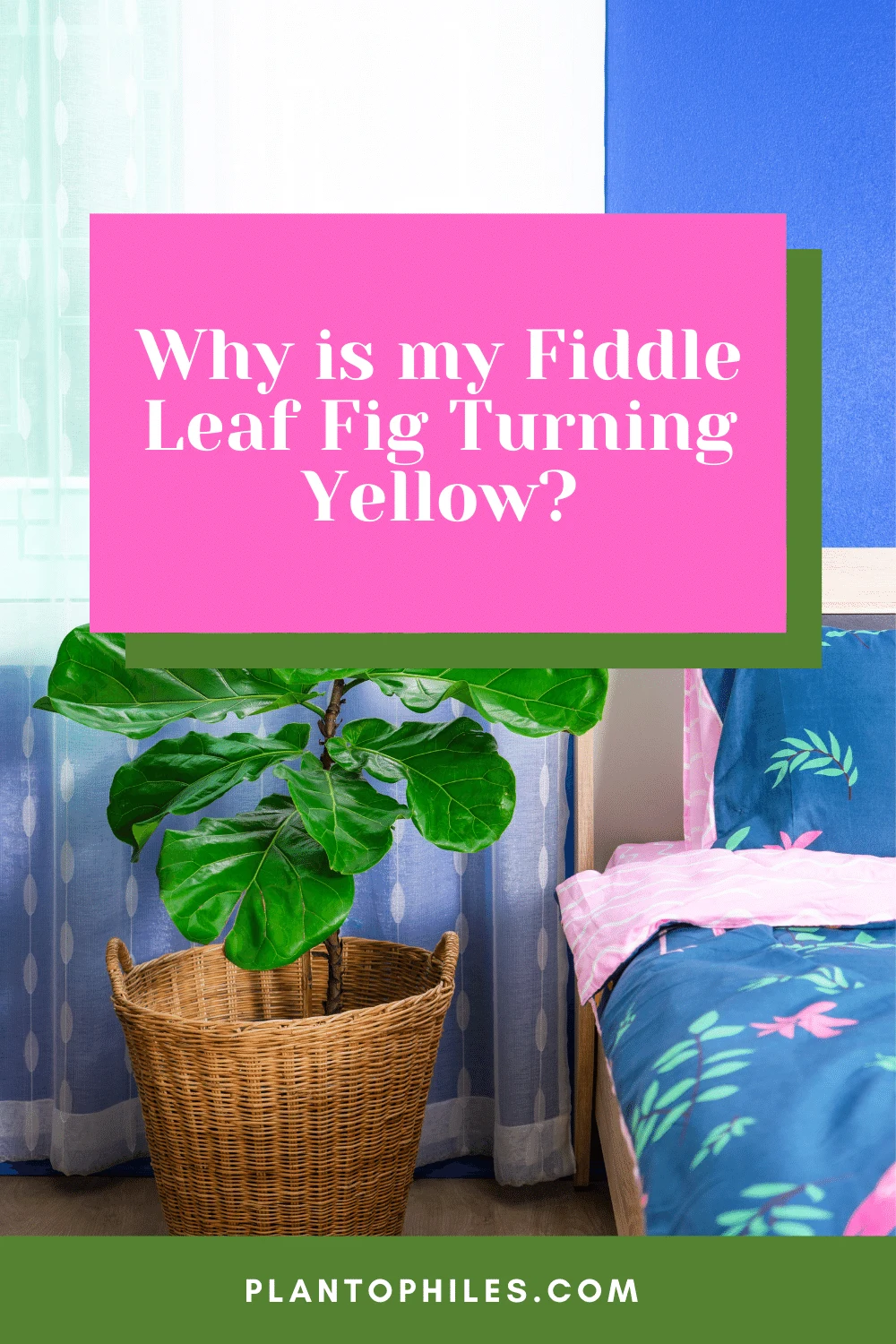
Why is my Fiddle Leaf Fig Turning Yellow
Reasons for a Fiddle Leaf Fig To Turn Yellow
The fiddle leaf fig or Ficus lyrata by its botanical name is native to tropical Western to Central Africa and can grow up o 50 feet high according to the University of Florida.
1. Too little water
Water is vital for the life of all plants, including the fiddle leaf fig.
It needs water to create its food, in the form of glucose.
Water also essentially gives the cells body, so the plant has form and can stand upright.
It is through absorbing water that contains minerals that the fiddle leaf fig gets the nutrients necessary for healthy growth.
If the plant doesn’t receive enough water, it will begin to wilt and the leaves will turn yellow.
2. Too much water
Fiddle leaf figs need a moderate amount of water.
They need to be grown in well-drained soil so that any excess water can drain away before it becomes a problem.
If the soil in which the fiddle leaf tree is growing contains too much clay and doesn’t drain effectively, it will retain water.
This means the roots become waterlogged and are most likely to develop root rot.
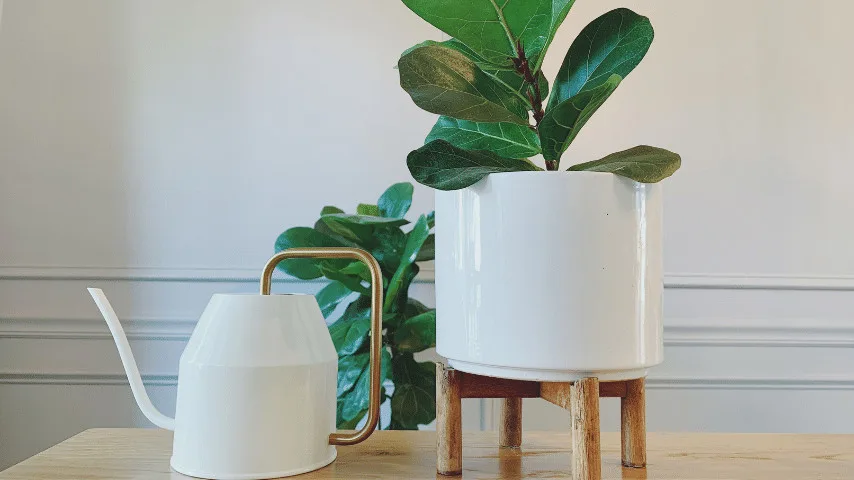
Too much/little water on fiddle leaf fig
3. Root rot
In an environment that is wet and where there is very little light and no air, bacteria and fungi will grow.
This coat the roots of a plant with a form of slime and they can no longer take in any water.
This means the fiddle leaf fig plant will not receive the nutrients it needs.
Eventually, the roots will rot. If this is left untreated, the leaves turn yellow and the plant will die.
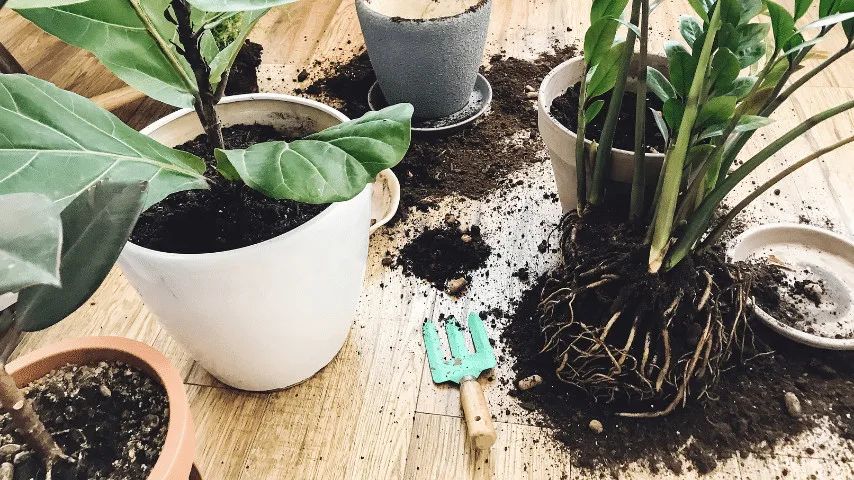
Roots will rot left untreated, the leaves turn yellow and the plant will die
4. Amount of light
Fiddle leaf figs need a lot of light to grow effectively, which translates into at least about 6 – 8 hours of bright light a day.
This should not be harsh sunshine, though, as these plants do not grow naturally in direct sunlight.
If your fiddle leaf fig plant receives too much harsh, direct light, it may develop yellow leaves.
On the other hand, if the plant doesn’t get enough light, its leaves may also turn yellow.
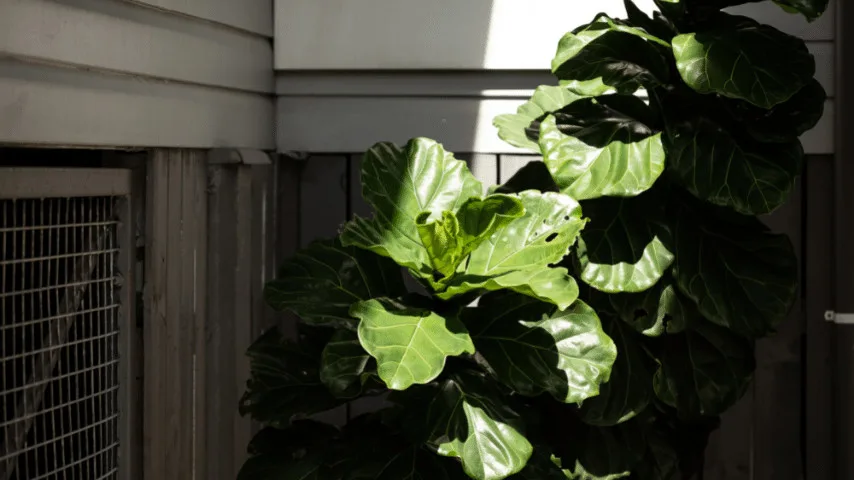
Fiddle leaf fig plant receives too much harsh, direct light, it may develop yellow leaves
5. Incorrect humidity
The fiddle leaf fig’s natural habitat is the lowland rainforest, where the atmosphere has high humidity.
When the plant is grown indoors, you should try to achieve the optimum humidity for the plant, which is between 30% and 50%.
If your fiddle tree fig begins to develop yellow leaves, you must look at the place where your plants stand.
If the area is too dry, you should move it to a more humid place, or make sure you mist the plant every day.
6. Nutrient deficiency
Fiddle leaf figs Plants grow through the process of photosynthesis and taking up nutrients and water from the soil.
If the soil lacks the necessary nutrients, the plant won’t be able to produce chlorophyll, the green pigment in the leaves, and an essential site for photosynthesis.
A nutrient deficiency means the plant won’t grow effectively and the leaves may turn yellow.
7. Pests and diseases
The fiddle leaf fig is quite a hardy plant and there are very few pests that affect it. The main exception is the scale insect.
Scale insects are related to aphids and whiteflies. They settle on the leaves of the fiddle leaf fig plant and produce scale coverings.
The scale insects feed off the sap of the leaves, which can deplete them of moisture.
They can also cover the leaves with a honeydew secretion, which inhibits the leaves from absorbing water in those areas.
One of the signs of a scale insect infestation can be that the leaves turn yellow.
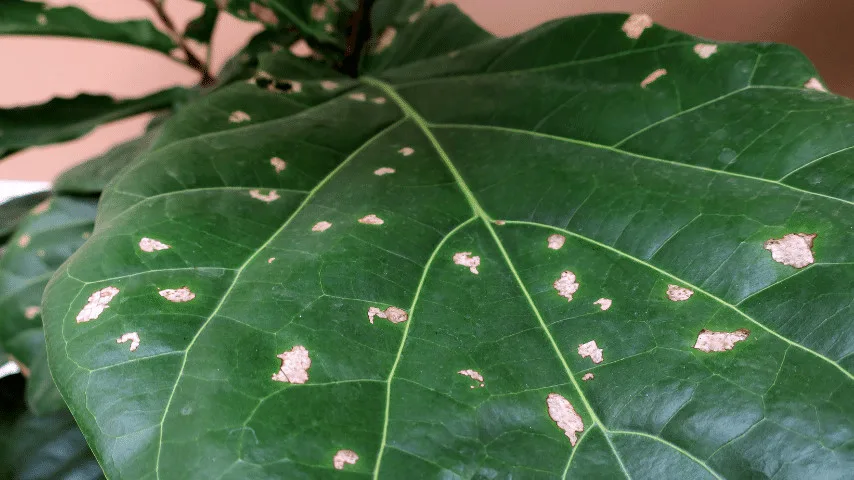
Fiddle leaf fig is quite a hardy plant and there are very few pests that affect it
8. Fiddle Leaf Fig Transplant shock
Fiddle leaf fig plants can grow to be quite big, so yours may outgrow the pot it is in.
You can choose to keep the plant growing in a pot, which will essentially stunt its growth.
However, take care that the roots do not become completely pot bound.
They do need some air around them in the soil, which should drain well.
When you repot the fiddle leaf fig or plant it out into the garden, it may suffer from transplant shock, which can turn the plant’s leaves yellow.
This is because the roots have not become anchored in the soil yet.
You should keep the soil around the plant moist until it has recovered from the shock.
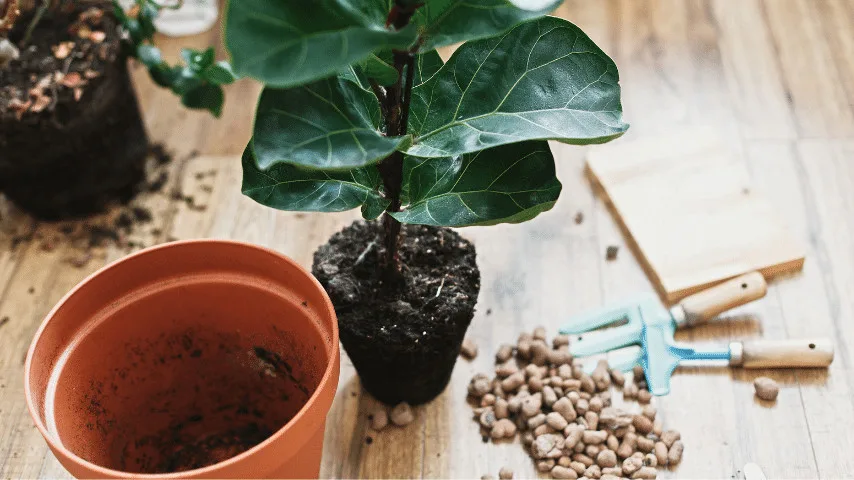
When you repot the fiddle tree fig or plant it out into the garden
9. Fertilizer burn
The fiddle leaf fig plant needs to be fed at least twice a year because it is a heavy feeder.
Too much fertilizer given at once, or fertilizer given too often can lead to the plant being burned by the fertilizer.
This will dehydrate the plant and the leaves will turn yellow.
The trick is only to give the plant the correct amount of the appropriate fertilizer.
Make sure the soil does not become waterlogged. Watch the leaves of the plant closely.
If they start to wilt and show any yellowing, then you will need to adjust the way you use fertilizer on your fiddle leaf fig plant.
Frequently Asked Questions About Why is my Fiddle Leaf Fig Turning Yellow?
Why does overwatering turn my fiddle leaf fig leaves yellow?
If a fiddle leaf fig plant is watered too much too often, then the roots can become waterlogged and may develop root rot.
The plant can then not absorb the water and nutrients it needs and will begin to die.
The leaves turn yellow in the absence of water and nutrients.
Why did the leaves of my fiddle leaf fig turn yellow when I repotted it?
When a plant is repotted, the established roots are taken out of the soil to which they are anchored.
When they are put into new soil in the new pot, they will not anchor themselves immediately.
They won’t be able to absorb the correct amount of water for a few days and the leaves may become dehydrated and turn yellow.
Conclusion On Why is my Fiddle Leaf Fig Turning Yellow
Fiddle tree figs need to be looked after correctly, or the leaves may turn yellow.
This means that they need to be kept in the correct conditions, receive the necessary nutrients, and be watered appropriately and regularly.

Daniel has been a plant enthusiast for over 20 years. He owns hundreds of houseplants and prepares for the chili growing seasons yearly with great anticipation. His favorite plants are plant species in the Araceae family, such as Monstera, Philodendron, and Anthurium. He also loves gardening and is growing hot peppers, tomatoes, and many more vegetables.


